A research group from Singapore’s Nanyang Technological University has investigated the flame spread behavior on weathered PV backsheets and has found they have a significantly faster flame spread than unweathered counterparts.
Testing two commercially available modules, the group is urging the industry to “revise existing safety standards, particularly the IEC 61215 standard,” saying that they fail to capture critical long-term degradation mechanisms.
“Despite their critical role as the initial flame-exposed layer, backsheet fire performance remains insufficiently characterised, particularly regarding degradation from environmental exposure. Current safety standards predominantly evaluate entire modules rather than specific components, potentially overlooking vulnerability points,” the academics said.
“We selected backsheets for this study based on their position as the primary interface between external fire sources and the PV module.”
The group has tested two commercial PV backsheet types, both with polyethylene terephthalate (PET) as their main component. Sample A had a TPE configuration, standing for a structure of Tedlar/PET/EVA, while sample B had a KPK configuration, with a structure of Kynar/PET/Kynar.
They were tested after exposure to a weathering device at four intervals: unweathered, 3 weeks, 4.5 weeks, and 6 weeks of exposure.
The accelerated weathering process followed a modified protocol based on the IEC 61215 standard test. It included an exposure of UVA-340A lamps at 1 W/m2 at 65 C for 8 hours, followed by condensing humidity at 50 C in the dark for 4 hours, with a water spray duration of 0.15 hours. For flame spread assessment, the research group has developed a time-to-marker (TTM) technique.
“Sample preparation involved marking three points at 15 mm intervals to quantify flame propagation. To counteract the shrinking effects of the thin polymer sheet under direct flame exposure, we rolled the samples into a conical shape with a 1 mm overlap, secured using metal staples,” the researchers explained.
“The conical geometry is necessary because thin polymer films (0.2-0.5 mm) undergo rapid shrinkage and deformation in a flat configuration, preventing reproducible measurements. Despite the geometric difference from field installations, TTM measures intrinsic material properties independent of sample geometry.”
To explain morphology and mechanical properties, the group has conducted scanning electron microscopy (SEM) and tensile testing. According to the results, chalking, or the release of TiO2 particles, was observed, resulting in crack formation. Furthermore, tensile strength dropped in both samples, with sample B degrading faster.
Chemical degradation was analysed using attenuated total reflectance Fourier-transform infrared spectroscopy (ATR-FTIR). The hydrolysis of PET, the formation of new chemical groups, and the loss of hydrogen bonds were identified as the main factors leading to degradation.
“Flame tests revealed significant differences between weathered and unweathered samples. Unweathered Sample A exhibited a flame spread rate of 2.8 mm/s, taking 9 seconds to reach the 3rd marker, the longest time recorded among all samples. In contrast, the 6-week weathered Sample A showed a rapid overall flame spread time of 10 seconds, compared to 16 seconds for the unweathered sample,” they found.
“The observed increase in flame spread rates, particularly the 46% reduction in TTM for Sample B after six weeks of weathering, underscores the critical impact of environmental exposure on fire safety.”
Furthermore, differential scanning calorimetry (DSC) showed that sample A has a slight reduction in melting point from 253.59 C to 253.43 C after six weeks of exposure. Sample B, exhibited two distinct melting points at approximately 120 C and 250 C in its different layers. Thermogravimetric analysis (TGA) revealed the onset of decomposition for Sample A at 422.48 C and Sample B at 434.92 C.
The research’s findings were published in “Investigating the Fire Dynamics of Mounted PV Weathering Effects and Material Changes,” which appeared in iScience.
This content is protected by copyright and may not be reused. If you want to cooperate with us and would like to reuse some of our content, please contact: editors@pv-magazine.com.
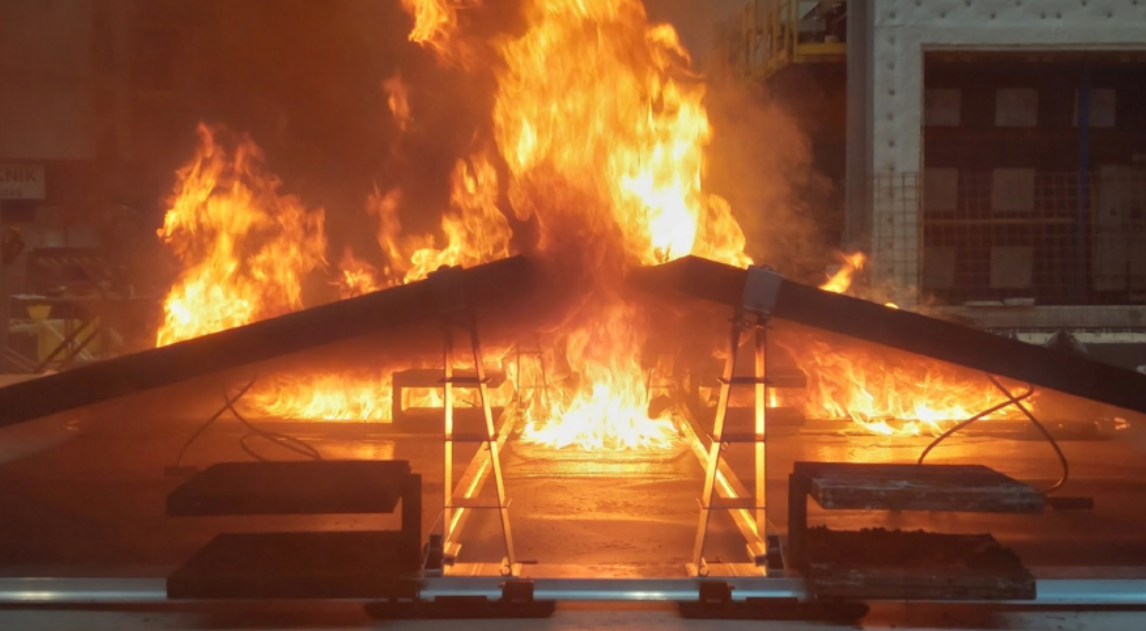
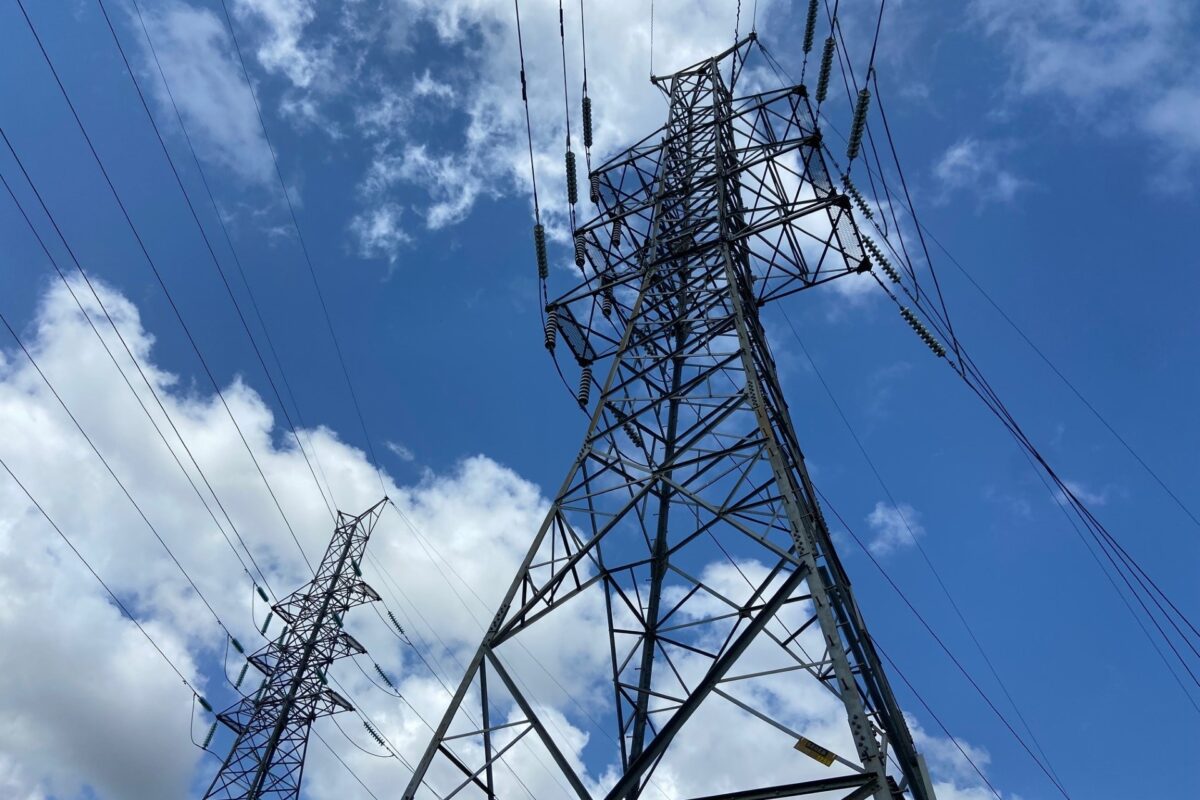

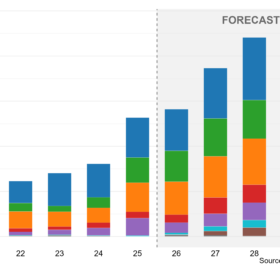
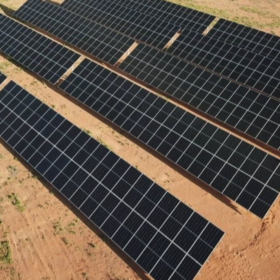
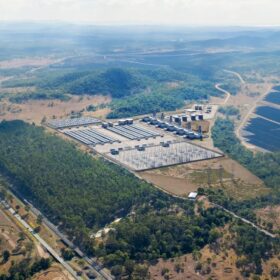
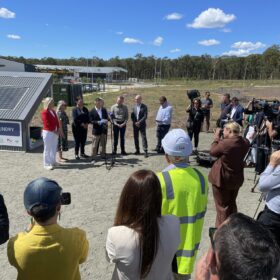

By submitting this form you agree to pv magazine using your data for the purposes of publishing your comment.
Your personal data will only be disclosed or otherwise transmitted to third parties for the purposes of spam filtering or if this is necessary for technical maintenance of the website. Any other transfer to third parties will not take place unless this is justified on the basis of applicable data protection regulations or if pv magazine is legally obliged to do so.
You may revoke this consent at any time with effect for the future, in which case your personal data will be deleted immediately. Otherwise, your data will be deleted if pv magazine has processed your request or the purpose of data storage is fulfilled.
Further information on data privacy can be found in our Data Protection Policy.